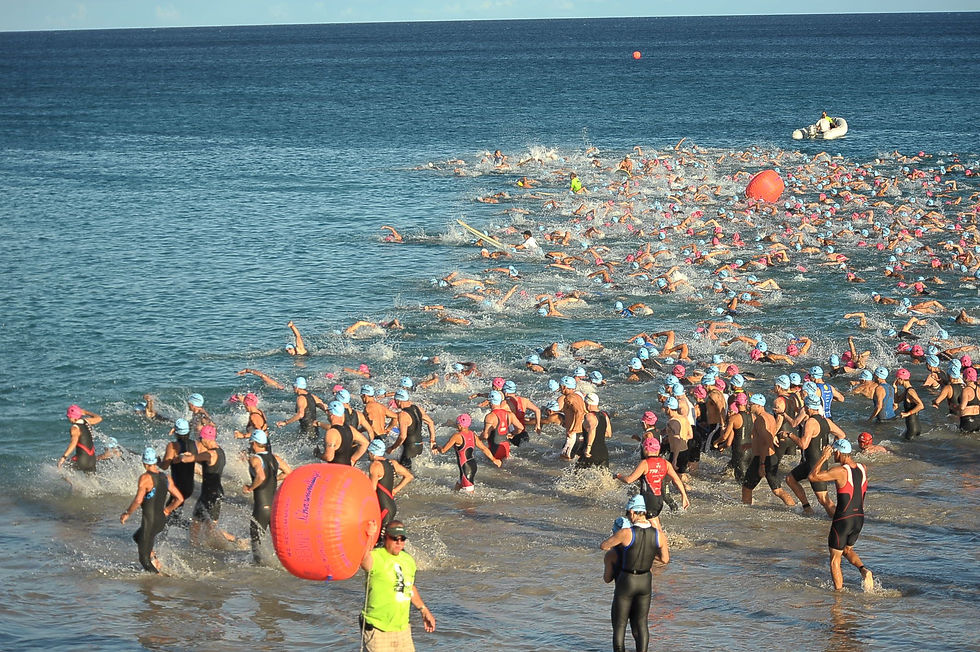Panic During the Swim
- Ron Saetermoe
- Apr 8, 2024
- 3 min read
The bane of many a triathlete is the swim. They seem to enjoy the cycling and running training but pretty much hate everything about the swim.
With that hate comes fear. Fear of everything: getting kicked, losing goggles, drowning, sharks, etc. Coming from a swimming background I personally don’t get it but let me tell you a story, because I can relate.
Thankfully, most Ironman events use a time-trial start, which means the faster swimmers seed themselves to the front and slower swimmers toward the back. Even though the start is much safer, stuff is just going to happen when you jamb that many people together – you just must accept it.
One year at Ironman Arizona when it was still a mass-start race, I got into the freezing cold water (about 53 degrees) 20 minutes before the swim start. Big mistake! I’m not fond of cold water in the first place but to be treading water for 20 minutes in it was just stupid.
I became hypothermic and was shaking badly and had a hard time breathing. When the gun went off my legs, from the waist down, completely froze up with cramps. The pain was horrendous and the only thing worse was the fact that I also couldn’t breathe! Naturally, the next thing I did was vomit! Not a good start for me.
Okay, so what can you do? The first thing NOT to do is panic! Difficult when you’re completely cramped up and can’t breathe I know, but that’s where you start.
The next thing is to figure a course of action. In my case I thought I could get to the shore to work the cramps out. The problem is there were so many other people between me and the shore, that was out of the question.
You do have options. Here are a couple of them:
1. Get to shore until the conditions change (i.e., you cramps, the waves, etc.). Generally, you won’t be DQ’d (disqualified) unless you make forward progress.
2. Get to a lifeguard. They can usually be found on a surfboard or kayak. You’re welcome to hold onto them if you don’t make forward progress.
3. Keep moving, albeit slowly. Try to keep making forward progress to the best of your ability. Your situation may improve just by moving forward.
4. Roll to your side or back. The triathlon swim does not dictate what stroke you must swim. Backstroke or sidestroke are completely acceptable.
5. Move out of traffic as soon as possible. Your inclination may be to take the shortest path but that’s where the traffic is. Just like driving your car, get into the slow lane.
6. Quit. It’s not worth drowning over. We all have bad days. Write this race off and come back and kick ass next time. Many times, when you realize quitting IS an option, you simply won’t.
Like most athletic endeavors, there simply isn’t any substitute for being prepared. Try to simulate race conditions as much as possible. Try to swim in the ocean before your ocean race. Get some friends together and simulate a mass-start. Practice backstroke and sidestroke. The more you’ve thought these situations through the better able you’ll be to deal with them.
See you at the races!
Cheers!
Coach Ron Saetermoe





Comments